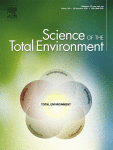Ver ítem
- xmlui.general.dspace_homeCentros e Institutos de InvestigaciónCIRN. Centro de Investigaciones de Recursos NaturalesInstituto de Recursos BiológicosArtículos científicosxmlui.ArtifactBrowser.ItemViewer.trail
- Inicio
- Centros e Institutos de Investigación
- CIRN. Centro de Investigaciones de Recursos Naturales
- Instituto de Recursos Biológicos
- Artículos científicos
- Ver ítem
Behavioral and physiological changes in the passerine Agelaioides badius following the ingestion of coated seeds with imidacloprid in a 30-day experiment
Resumen
The wide use of neonicotinoid seed treatment represents a hazard for farmland birds that feed on treated seeds. This study aimed to characterize the long-term effects of the neonicotinoid imidacloprid (IMI) in the passerine grayish baywing (Agelaioides badius). The birds were fed ad libitum for 32 days only with seeds treated with 53.1 (Low, 11 % of LD50) and 514 (High, (112 % of LD50) mg IMI/kg seed; these concentrations representing respectively, 1.8
[ver mas...]
The wide use of neonicotinoid seed treatment represents a hazard for farmland birds that feed on treated seeds. This study aimed to characterize the long-term effects of the neonicotinoid imidacloprid (IMI) in the passerine grayish baywing (Agelaioides badius). The birds were fed ad libitum for 32 days only with seeds treated with 53.1 (Low, 11 % of LD50) and 514 (High, (112 % of LD50) mg IMI/kg seed; these concentrations representing respectively, 1.8 and 17.1 % of 3 g IMI/kg, an average application rate used to treat crop seeds in Argentina. The effects exerted by IMI on birds were evaluated at behavioral, physiological, hematological, genotoxic, and biochemical levels. No differences in food consumption were observed between Control and Low treatments birds, indicating a lack of aversion to treated seeds. High treatment birds only decreased their food consumption by 20 % in the first 3 days of exposure. Birds from High treatment experienced an early loss of body weight, reduction in their mobility, lack of response to threats (i.e., predator call and approaching person), and altered their use of the cage. On the contrary, birds from Low treatment experienced a delay in the onset of effects like reduction in mobility, lack of response to threats, and a tendency to reduce their body weight. At the end of exposure, glutathione S transferase activity in the plasma of treated birds decreased, and cholinesterase activity increased in the liver of treated birds. This study highlights that consumption equivalent to 1.8 % of the daily diet of baywings as IMI-treated seeds, is sufficient to generate behavioral and physiological alterations and death. In the wild, these effects may have ecological consequences, by impairing the survival of birds, representing a risk to farmland bird populations.
[Cerrar]

Fuente
Science of the total environment 905 : 167078 (December 2023)
Fecha
2023-12
Editorial
Elsevier
ISSN
0048-9697
Documentos Relacionados
Formato
pdf
Tipo de documento
artículo
Proyectos
(ver más)
INTA/PNNAT-1128043/AR./Los agroquímicos como fuente de contaminación difusa en agroecosistemas.
Palabras Claves
Derechos de acceso
Restringido
 Excepto donde se diga explicitamente, este item se publica bajo la siguiente descripción: Creative Commons Attribution-NonCommercial-ShareAlike 2.5 Unported (CC BY-NC-SA 2.5)
Excepto donde se diga explicitamente, este item se publica bajo la siguiente descripción: Creative Commons Attribution-NonCommercial-ShareAlike 2.5 Unported (CC BY-NC-SA 2.5)


